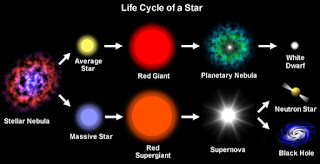CHEMISTRY OF THE UNIVERSE!
What Is Astrochemistry?
Astrochemistry is the study of of the abundance and reactions of chemical elements and molecules in the Universe, and their interaction with radiation. The discipline is an overlap of astronomy and chemistry. The word "astrochemistry" may be applied to both the Solar System and the Interstellar Medium.
Astrochemistry can also be defined as a branch of astronomy and chemistry dealing with the chemical composition and evolution of the universe and its parts. Astrochemistry is an area of science which studies the atoms and molecules in space and the reactions that occur between them.
Interstellar Medium
In astronomy the interstellar medium (ISM) is the matter that exists in the space between star systems in a Galaxy. This matter includes gas in ionic, atomic, and molecular form, as well as dust and cosmic rays. It fills interstellar space and blend smoothly into the surrounding intergalactic space. The energy that occupies the same volume, in the form of electro magnetic radiation, is the interstellar radiation field.
The interstellar medium is composed of multiple faces comedy distinguished by weather matter is ionic, atomic or molecular, and the temperature and density of the matter. The interstellar medium is composed primarily by hydrogen followed by helium with trace amounts of carbon, oxygen, and nitrogen comparatively to the hydrogen.
The ISM plays a crucial role in astrophysics precisely because of its intermediate role between stellar and galactic scales.
Astrochemists Study The Interaction Between Atoms And Molecules In Space
This type of study enables researchers to understand more about how planets and stars are formed. While once it was thought that nothing existed in the spaces surrounding stars and planets, now it is recognised that numerous molecules are to be found. Some of these are familiar on Earth, such as hydrogen, and other chemicals only exist in space. It is thought that astrochemistry research into the behaviour of molecules in space could provide clues to the origin of life on Earth.
Astronomical Researchers Use Radio Telescopes To Detect Radio Waves Given Off By Gases And Stars.
Early astronomers use telescopes which could only see objects that emitted light in the visible range of the spectrum. Later scientist discovered the objects in space could also give out electromagnetic radiation from other, non-visible, parts of the spectrum, including microwaves, infrared, ultraviolet, gamma, X-rays and radio waves.
Astrochemical research techniques use special radio telescopes to detect radio waves, which are given off by gases and stars. The information from these is combined with the findings from other instruments and telescopes, covering other areas of the spectrum, in order to build up a complete picture of the chemistry of space.
Discovery Of Molecules Through Astrochemistry
Following astrochemistry research into the dust difference between stars, many different molecules have been recognised and the processes that led to the creation have been analysed.
Analysis of the two chemistry of giant dust clouds in space and the comparison with molecular reactions on earth in evil scientist to understand how Earth chemistry developed as it did .
Research into the processes by which more complicated chemical structures are formed should give a greater understanding of the chemistry involved in the making of planets and stars. Astrochemist researchers also study the creation of complex molecules that are rich in carbon similar to the terrestrial life forms, which could provide insights into how life on Earth began.
If these complex molecules are able to originate in space, it would seem more likely that life exist in places other than Earth.
Amazing facts
• The most common Nickname for Saturn is "The Ringed Planet" a nickname arising from the large, beautiful and extensive ring system that encircles the planet. These rings are mostly made from chunks of ice and carbonaceous dust.
• There is a giant cloud of alcohol in Sagittarius B. Sagittarius B is a vast molecular cloud of gas and dust floating near the centre of milky way, and amazingly it contains 10 Billions-billion litres of alcohol. The vinyl alcohol in the cloud is for from the most flavoursome tipple in universe, but it is an important organic molecule which offers some clues how the first building blocks of life forming substances are produced.
• There are many stars which have 1000s and 1000s carats of diamonds in their core which is formed due to crystallization of CARBON.










👍great
ReplyDelete